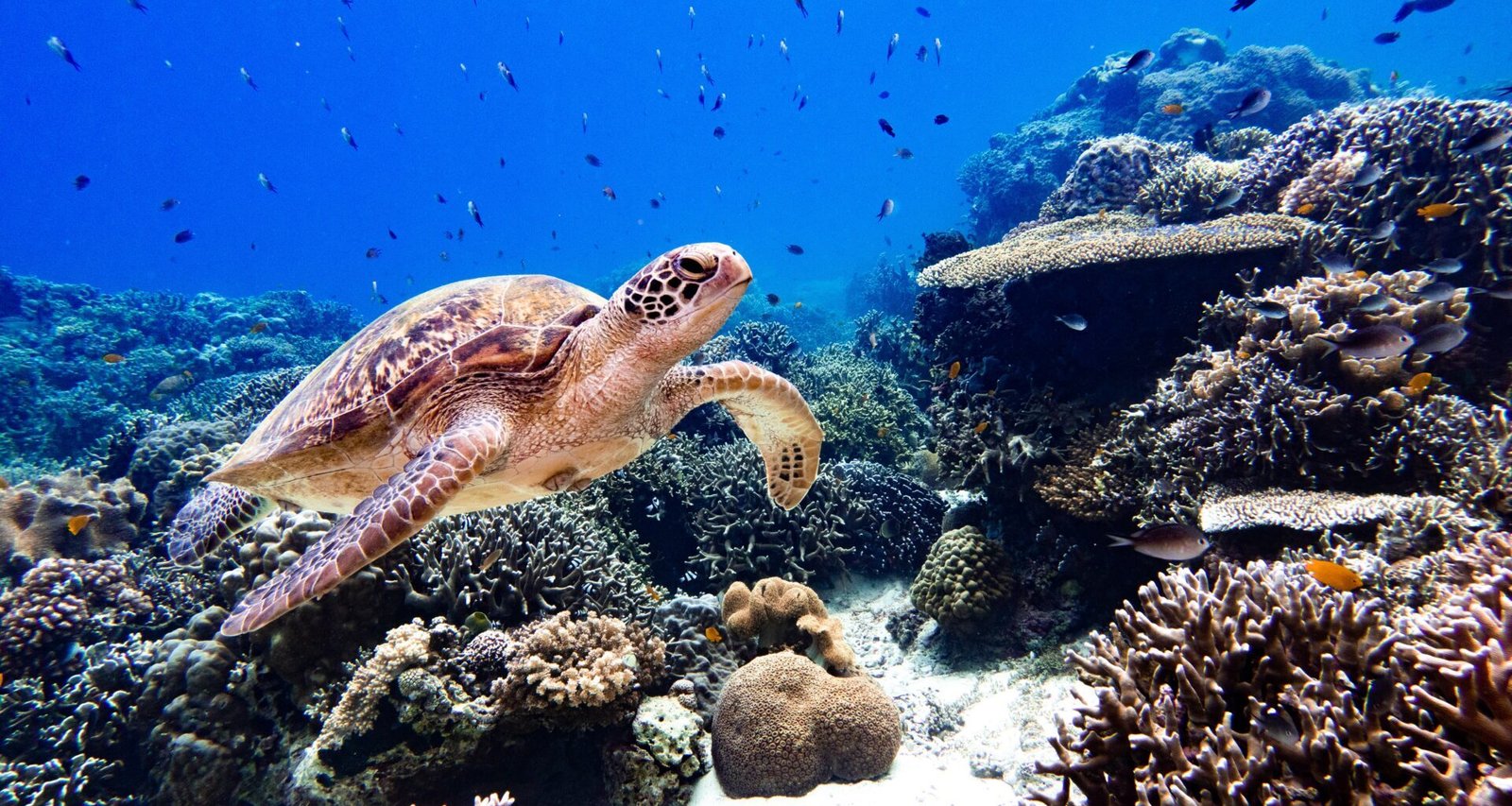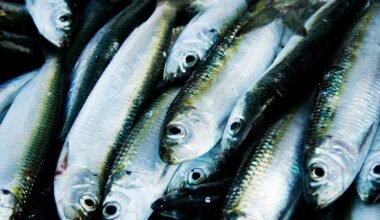Ever wonder why we should care about some colorful rocks under the sea? Those coral reefs you’ve seen in pictures and videos are far more important than you realize. As much as they are beautiful to look at, coral reefs are vital ecosystems that we literally need to survive. You depend on coral reefs every single day, even if you don’t live anywhere near an ocean. Here’s why you need coral reefs in your life and what will happen if we lose them.
Coral reefs sustain over 25% of all marine life, even though they cover less than 1% of the ocean floor. Thousands of species of fish and other sea creatures call coral reefs home. Many of the fish we eat, like snapper and grouper, live part of their lives in coral reefs. But coral reefs also protect our coastlines, support tourism in many countries, and are potential sources of new medicines.
Despite their importance, nearly 1/3 of all coral reefs have already been destroyed, and up to 90% may die off by mid-century. For our future, and the future of our oceans, coral reefs are worth saving. Their fate is ultimately our fate. So now you know – coral reefs matter to you and everyone else on this planet. Let’s make sure they survive and thrive.

What Are Coral Reefs and Where Are They Found?
Coral reefs are underwater structures made from calcium carbonate secreted by colonies of coral polyps. These reefs form some of the most diverse ecosystems on the planet and are found in shallow, tropical waters around the world, especially near islands and continents.
Where Are Coral Reefs Located?
The three major areas where coral reefs are located are:
- The Indo-Pacific region including the Red Sea, Indian Ocean, and the Pacific Ocean. This region contains over 75% of the world’s coral reefs, including the Great Barrier Reef off the northeast coast of Australia, which is the largest coral reef system.
- The Caribbean Sea and Atlantic Ocean. Coral reefs in this region include those along the coasts of Belize, the Bahamas, and the Florida Keys.
- The Red Sea, which separates Africa from the Arabian Peninsula. Coral reefs in the Red Sea have the highest biodiversity of reefs anywhere on the planet.
Coral reefs are important for humans and the planet in many ways:
- They protect coastlines from erosion and storm damage. Coral reefs absorb up to 97% of wave energy that would otherwise impact shorelines.
- They are a source of food and new medicines. Coral reef plants and animals provide nutrients, medicines, and cures for human diseases. Many common medicines are derived from coral reef plants and animals.
- They generate tourism and recreation revenue. Beautiful coral reefs attract scuba diving, snorkeling, and other ocean activities that fuel local economies.
- They are home to much of the ocean’s biodiversity. Although coral reefs cover less than 1% of the ocean floor, they support 25% of all marine species. Protecting coral reefs means protecting the future of our oceans.
The Incredible Biodiversity Supported by Coral Reefs
Coral reefs are home to an incredible array of marine life. Over 25% of all ocean species can be found on coral reefs, even though they only occupy less than 1% of the ocean floor.
Fish
- Coral reefs provide habitats for over 4,000 species of fish, from clownfish to sharks. The nooks and crannies of the reef provide shelter and nurseries for fish at every stage of their life cycle. Many species of fish rely entirely on coral reefs for feeding, breeding, and developing into adults. Without reefs, their populations would plummet.
Invertebrates
- In addition to fish, coral reefs are inhabited by worms, crustaceans, mollusks, and echinoderms. Lobsters, crabs, shrimp, sea urchins, starfish, clams, and octopuses all dwell among the reefs. Coral polyps themselves are also invertebrates. The soft bodies of these animals need the protection of the reef to survive.
Sea Turtles
- Coral reefs are especially important for sea turtles. Sea turtles rely on reefs for food sources like sponges, algae, and seagrass, as well as for shelter. Sea turtles frequently nest on beaches adjacent to coral reefs, and hatchlings often swim to reefs for protection and food in their early years. Six out of the seven sea turtle species are classified as endangered or threatened, so protecting their coral reef habitats is critical to their survival.
Coral reefs are biodiversity hotspots that provide habitats, shelter, and sustenance for so much of the ocean’s life. Their immense biological value and the interconnectedness of reef species show why we must make conservation of these delicate ecosystems a priority. Our oceans depend on the survival of coral reefs.
Coral Reefs Protect Coastlines From Storms and Erosion
Coral reefs act as natural barriers protecting coastlines from the destructive forces of waves, storms, and erosion. They absorb up to 97% of a wave’s energy, shielding coastal communities and infrastructure.
Without coral reefs, the massive waves generated by hurricanes and tropical storms would crash directly onto shore, causing catastrophic damage. During Hurricane Katrina, areas of the Louisiana coastline that had lost their coral reef and wetland protection were devastated, while places with intact reef systems fared much better.
Coral reefs also prevent beach erosion by stabilizing the sediment in coastal areas. Their rough, porous surfaces break up wave action and currents, slowing water flow and trapping sand and sediment. Over time, this allows beaches and shorelines to build up and expand. In areas where coral reefs have declined, beaches have started to disappear at alarming rates due to increased erosion.
Coastal communities around the world depend on the protection provided by coral reefs. According to the World Wildlife Fund, over 200 million people live within 60 km of coral reefs, and benefit from the resources and coastal defense they provide. However, as climate change warms and acidifies the oceans, the future of coral reefs hangs in the balance.
If we want to safeguard coastal towns and cities from the effects of sea level rise and intensifying storms, protecting and restoring the world’s coral reefs should be a top priority. By establishing marine protected areas, reducing pollution, and transitioning to more sustainable fishing practices, we can give coral reefs their best chance to thrive for generations to come. Our coastlines depend on it.
Coral Reefs Provide Food for Hundreds of Millions
Coral reefs are vital for humanity’s survival because they provide food for hundreds of millions of people around the world. Many coastal communities depend on the abundance of seafood that coral reefs support.
A Source of Nutrition
- Coral reefs are home to over 25% of all marine species on the planet. This includes thousands of species of fish, crustaceans like shrimp and lobster, and mollusks such as clams, oysters, and squid. For populations in developing tropical countries, fish from coral reefs supply over 50% of their protein intake and nutritional needs.
- Losing the coral reefs would have devastating consequences, as many poor communities would lose access to this crucial food source and affordable source of nutrition. The collapse of reefs could lead to food shortages, health issues, and economic decline in these areas.
A Lucrative Industry
- The seafood industry centered around coral reefs generates billions of dollars per year and employs over a million people worldwide. Commercial fishing of coral reef species provides both food as well as livelihoods for many. However, overfishing and destructive fishing practices already threaten many reef fish populations.
- More sustainable fishing and management of reef species is critical to support this industry long-term, as well as the tourism industry. Both industries rely on healthy, biodiverse coral reef ecosystems to thrive.
In summary, coral reefs provide sustenance, livelihoods, and economic prosperity for humankind in numerous ways. Protecting these vulnerable yet valuable ecosystems is in our shared interest as they are integral to the food security, health, and financial stability of many populations. Our survival depends on the survival of coral reefs.
Coral Reefs Are a Source of New Medicines
Coral reefs are home to millions of species of fish and other marine life. But they also hold promise for new medicines that could save human lives. Scientists have only begun to explore the vast array of corals, sponges, algae, and other reef organisms as potential sources for new drugs.
A Wealth of Biodiversity
- Coral reefs contain an incredibly diverse array of marine life in a relatively small area. This biodiversity has been evolving for over 200 million years, producing a variety of complex chemical compounds as defenses against predators or to gain a competitive advantage. Many of these chemicals have potential medical applications as antiviral, antibiotic, anti-inflammatory, and anticancer agents.
- For example, certain sponges found on the Great Barrier Reef produce chemicals shown to combat HIV, the herpes simplex virus, and several types of cancer cells. Other coral reef animals like cone snails, tunicates, bryozoans, and molluscs have also been found to contain compounds useful for treating pain, cancer, Alzheimer’s disease, and other ailments.
An Untapped Resource
- Despite the promise, less than 1% of coral reef organisms have been studied for medical uses. Exploration is slow, difficult, and expensive. Collecting organisms in the wild can damage reefs, so scientists are developing new techniques for sustainably culturing coral and other reef animals in labs. Still, we have only begun to tap the potential of coral reefs as a source for new medicines.
Losing coral reefs means losing millions of years of evolution and the natural library of chemicals they contain. As reefs face growing threats from climate change, pollution, and development pressures, protecting them is crucial not just for the environment but also for human health and prosperity. Coral reefs could hold the key to new treatments for some of humanity’s most serious diseases, so safeguarding them is in our own self-interest. Our lives may someday depend on the survival of coral reefs.
Coral Reef Tourism Provides Income for Local Economies
Coral reefs are a major draw for tourists around the world, providing crucial income for many coastal communities and countries. Tourism related to coral reefs generates billions of dollars annually and supports millions of jobs in adjacent areas.
Local Economic Driver
- Coral reef tourism is a primary economic driver for many small island nations and developing countries. In places like the Bahamas, Belize, Fiji, and the Maldives, coral reefs and the marine life they support attract droves of visitors each year for snorkeling, scuba diving, and other ocean activities. The revenue from accommodation, dining, recreation, and transportation provides jobs and income for people in these communities.
- Some estimates indicate that coral reef tourism contributes up to 25% of the GDP in the Caribbean, and the industry employs nearly half the workforce in some small island countries. The income and livelihoods generated by tourism give people a reason to protect and preserve the very resource that supports them. Healthy, vibrant reefs mean more visitors and more money flowing into the local economy.
Ripple Effects
- The economic impacts of coral reef tourism extend far beyond the coastal areas and businesses that directly cater to visitors. Tax revenue from tourism spending funds public services like infrastructure, education, and healthcare. And the money tourists spend circulates through the broader economy, supporting additional jobs in agriculture, transportation, food service, and retail.
Some destinations have implemented tourism fees and taxes that go directly toward managing natural resources and mitigating the environmental impacts of visitors. These funds are used to limit damage to reefs and support conservation efforts so that coral reefs remain healthy and continue attracting tourists for generations.
A Delicate Balance
- While coral reef tourism clearly provides economic advantages, it also poses risks. Too many visitors or unregulated activities can physically damage reefs, depleting the very attraction that drives the industry. Coastal development, pollution, and improper waste management threaten the health of reef ecosystems over the long run.
Destinations must strike a balance between reaping the economic benefits of tourism and safeguarding natural and cultural resources. Sustainable tourism practices, resource protection laws, and educating both visitors and locals about responsible use and stewardship of coral reefs will help ensure this delicate balance is maintained. The future of the tourism industry and coastal communities depends on it.
The Cultural Significance of Coral Reefs
Coral reefs have held cultural significance for coastal societies around the world for centuries. Their beauty and abundance have inspired art, religion, and folklore.
A Source of Food and Livelihood
- For many island and coastal communities, coral reefs are a source of food and economic livelihood. Reef fish and other seafood are an important source of protein. The ornamental fish trade also provides jobs and income. Tourism related to reef activities like snorkeling, scuba diving, and recreational fishing generates revenue for local businesses.
Art and Symbolism
- The vibrant colors and textures of coral reefs have influenced art and design in coastal cultures. Their symbolic associations with life, fertility and connectivity have appeared in religion, mythology, and folklore.
- For example, in Hawaiian culture the coral polyp is a symbol of eternal life after death. The ancient Egyptians believed that coral had magical powers and used it in medicinal potions. The Maori people of New Zealand incorporated red coral motifs into their wood carvings and tattoo designs.
A Part of Cultural Identity
- Coral reefs have shaped cultural identities in coastal communities around the world. They represent a shared natural and spiritual heritage, and a source of pride. Protecting reefs is about safeguarding this cultural legacy for future generations.
However, many reefs today face serious threats from climate change, pollution, overfishing and destructive fishing practices. As reefs decline, so too does the cultural knowledge, livelihoods and identities linked to them. Conserving coral reefs is vital not only for biodiversity, but also for the cultural diversity of humankind. By protecting reefs, we preserve a part of our shared cultural heritage.
The Threats Facing Coral Reefs Today
The health of coral reefs around the world is under serious threat. As humans, it’s our responsibility to understand these dangers and make changes to protect these vital ecosystems.
Increased Ocean Temperatures
- As the climate continues to warm, ocean temperatures are rising. Coral reefs can only survive in a narrow temperature range, and higher heat causes coral bleaching, which leads to coral death. Some of the worst bleaching events in history have occurred in recent decades.
Ocean Acidification
- The ocean absorbs much of the carbon dioxide we release into the atmosphere. This causes seawater to become more acidic, making it difficult for corals and other marine life to build their skeletons and shells. At the current rate of acidification, coral growth may be impossible by 2100.
Pollution
- Chemicals, fertilizers, and waste from human activities wash into the oceans, polluting coastal waters and smothering coral reefs. Plastic pollution is especially damaging, as corals and other animals often mistake bits of plastic for food.
Overfishing
- Many reef fish and other species are overfished to meet the demand for seafood. Removing too many fish upsets the delicate balance of the reef ecosystem. Certain fish also eat algae that compete with corals, so overfishing can lead to algal overgrowth.
Destructive Fishing Practices
- Some fishing methods like bottom trawling, dynamite fishing, and cyanide fishing severely damage coral reef habitats. They should be banned to protect reefs.
The future of coral reefs depends on us. By reducing pollution and transitioning to sustainable energy and fishing practices, we can curb the threats facing these vital rainforests of the sea. The lives of millions of species and the livelihoods of many communities are at stake. Together, we can ensure that coral reefs are able to survive and thrive for generations to come.
What We Can Do to Save Coral Reefs?
Coral reefs are vital ecosystems that we all depend on, even if we don’t live near an ocean. Here are some of the ways we can each do our part to protect these important habitats.
Reduce pollution
- The biggest threat to coral reefs is pollution from human activities like burning fossil fuels, deforestation, and industrial waste. We can all make an effort to produce less pollution in our daily lives. Drive less when possible, choose sustainable products, and properly recycle and dispose of waste. Together, small changes can make a big difference.
Conserve water
- Coral reefs need clean, fresh water to thrive. Be mindful of how much water you use each day and look for ways to cut back. Take shorter showers, turn off the faucet when not in use, and only run full loads in the dishwasher and washing machine. Less water use means less wastewater and pollution flowing into the oceans.
Make sustainable seafood choices
- Many popular seafood items like shrimp, tuna, and salmon are overfished or caught in ways that damage coral reefs. Choose seafood from sustainable sources and avoid endangered species. Buying locally caught seafood also supports fishing communities and reduces the carbon footprint of your meal.
Spread awareness
- Educate others about the importance of coral reefs and the threats they face. Share information on social media, give a presentation at your school or community center, or write a blog post explaining how people can get involved in conservation efforts. Grassroots education and advocacy make a huge difference.
Travel responsibly
- If you visit coral reef destinations, choose tour operators and activities that follow sustainable and eco-friendly practices. Never touch or stand on coral reefs, as this can damage the delicate coral animals. Follow all posted signs and only snorkel or dive in approved areas. Your tourism dollars and actions can support reef conservation.
Every one of us has a role to play to ensure the survival of these vital rainforests of the sea. Doing your part, however small, can help make a difference in protecting coral reefs for future generations. Together, we can save the reefs.
Conclusion
So there you have it, coral reefs are vital to life as we know it. The next time you enjoy seafood or visit a beach, remember that coral reefs make it all possible. They protect our coastlines, provide habitat for fish, generate tourism revenue, and are a source of new medicines. Even if you never see a coral reef in person, you depend on them. The harsh truth is coral reefs are in trouble.
As the climate continues to change, the outlook isn’t good for these underwater rainforests unless we make big changes. But the good news is each one of us can make a difference by reducing pollution, eating sustainable seafood, and conserving energy. Together, we can ensure coral reefs are around for future generations to enjoy. Our lives, economies, and planet depend on the actions we take today to protect coral reefs. The time to act is now. Our coral reefs need us, just as much as we need them.








